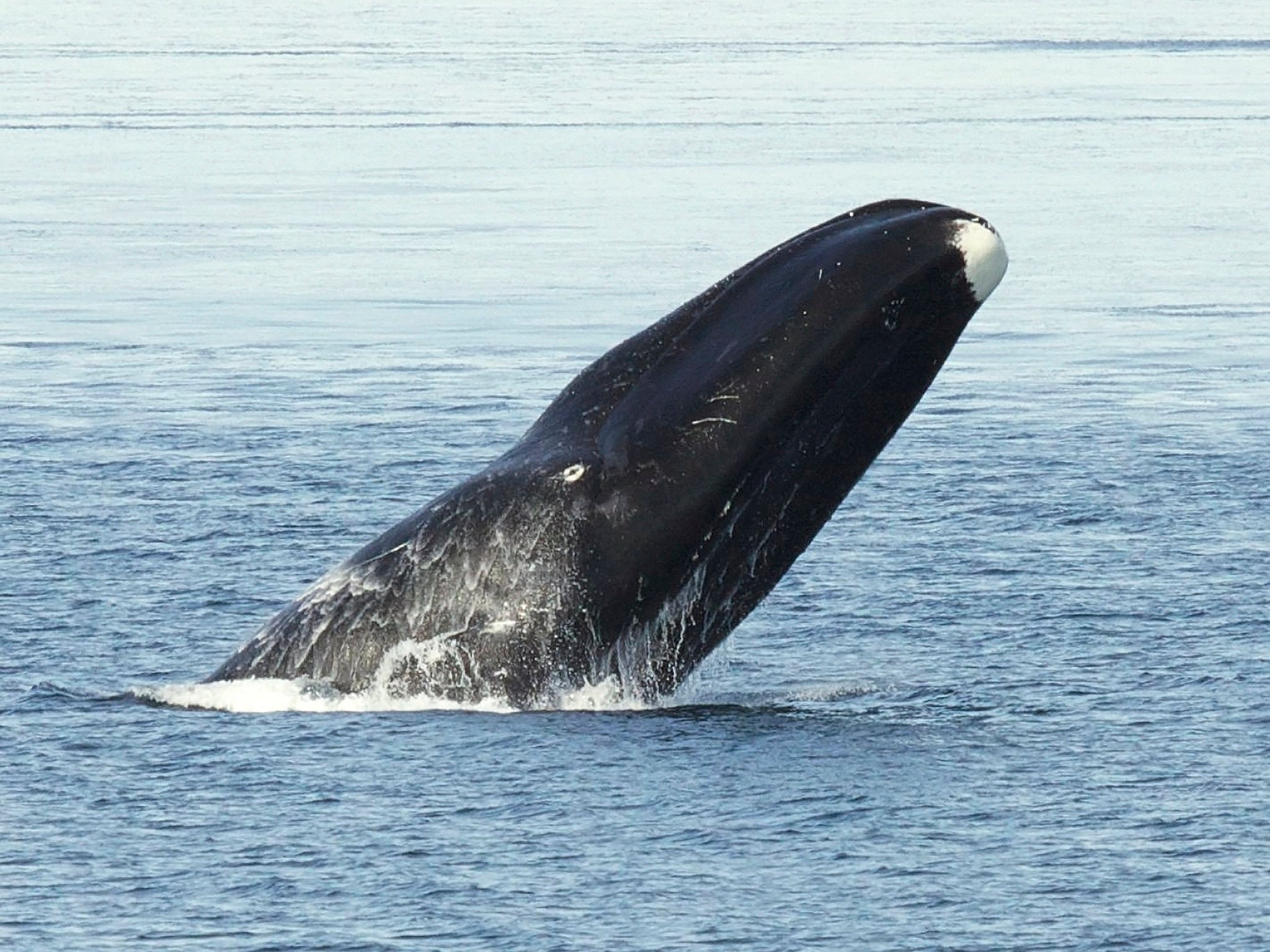Bowhead whales sing 'freeform jazz style songs to woo partners', study says
'If humpback whale song is like classical music, bowheads are jazz'

Arctic-dwelling bowhead whales have been described as the “Louis Armstrong” of the oceans after scientists revealed the highly varied style of the songs the species produces during its breeding season.
The bowhead, which has the largest mouth of any living animal, constantly changes its vocal repertoire during its winter breeding season, when it largely lives beneath the pack ice during the blackness of the 24-hour polar night.
During this period the whales sing for 24 hours a day. Scientists used hydrophones – underwater microphones – to record the whales during mating seasons over several years.
They were amazed by the range of vocalisations, which followed specific patterns, sometimes repeated over a period of months, but never returning in subsequent years.
Lead author of the study Professor Kate Stafford, who is an oceanographer at the University of Washington, compared the whales’ musical style to jazz. She said: “If humpback whale song is like classical music, bowheads are jazz.
“The sound is more freeform.
“And when we looked through four winters of acoustic data, not only were there never any song types repeated between years, but each season had a new set of songs.”
The study, published in Biology Letters, analysed audio data gathered year round from pods east of Greenland, from 2010 to 2014.
A total of 184 specific songs, or musical phrases were identified.
This population of Spitsbergen bowhead whales is critically endangered. The species was ruthlessly hunted soon after commercial whaling began in the early 17th century. The whales’ slow cruising speeds of 1-3mph and top speed of about 6mph made them particularly vulnerable and they were almost wiped out by the mid-1600s.
Before the advent of commercial whaling it is estimated the species numbered around 50,000.
Now around 100 individuals are estimated to remain of the Spitsbergen population, with as many as 10,000 individuals living across four other populations.
Professor Stafford, who has recorded whales singing across the world’s oceans, first discovered bowheads singing off west Greenland in 2007.
She said: “We were hoping when we put the hydrophone out we might hear a few sounds.
“When we heard, it was astonishing. Bowhead whales were singing loudly, 24 hours a day, from November until April. And they were singing many, many different songs.”
The later recordings extended the bowhead’s known singing season from late autumn all the way through to early spring, and the hydrophones found an increased level of singing in more recent years.
But it was the immense variety of individual sound sets that amazed the scientists. The team originally thought the bowhead’s vocalisations would mirror those found in humpback whales, in which a song is common to each population of males and changes subtly in the winter breeding season. Each population debuts a new style of vocalisation in spring.
But Professor Stafford said: “It was thought bowhead whales did the same thing, based on limited data from springtime.
“But those 2008 recordings were the first hint, and now this data confirms that bowhead whale songs are completely different from the humpbacks’.”
The data indicates bowhead whales rival some songbirds in the diversity of their vocal repertoires.
Professor Stafford said: “For marine mammals, acoustics is how they do everything. Humans are mostly visual animals, but marine mammals live in a three-dimensional habitat where sound and acoustic information is how they navigate, how they find food, how they communicate.”
More research is required to further understand the purpose for the whales’ calls and the reason for their diversity. It is also not known if both sexes vocalise or if, as in humpbacks, it is the males singing.
Professor Stafford said: “Why are they changing their songs so much? In terms of behavioural ecology, it is this great mystery.”
“Bowhead whales do this behaviour in the winter, during 24-hour darkness of the polar winter, in 95 to 100 per cent sea ice cover. So this is not something that is easy to figure out.
“We would never have known about this without new acoustic monitoring technology.”
Current plans to expand the research include placing radio tags on bowhead whales, which could reveal why this species has evolved to become such a versatile virtuoso.
Professor Stafford added: “Bowheads are superlative animals.
“They can live 200 years, they have got the thickest blubber of any whale, the longest baleen, they can break through ice.
“And you think – they have evolved to do all these amazing things. I don’t know why they do this remarkable singing, but there must be a reason.”
Join our commenting forum
Join thought-provoking conversations, follow other Independent readers and see their replies
Comments